沿著河邊尋歷史、聞著餅香品人情、
走入廟街見信仰,問道新莊瘋文青。
Stroll along the riverside to trace history, Smelling the aroma of cakes and looking for human touch, step into temple streets to witness faith—explore Xinzhuang through the eyes of a culture lover.
這是一段穿越新莊廟街記憶的深度走讀,
帶著對老街的懷念,刻印出街道間的文史風華。
This is an in-depth walk through the memories of Xinzhuang Temple Street, carrying with it the nostalgia for the old street and imprinting the cultural and historical charm of the streets.
潮江寺中的對聯 : 潮音振耳、江水映月。
Couplet in Chaojiang Temple: The tide vibrates the eardrums, and the river reflects the moon.
新莊老街之所以稱為 : 廟街,顧名思義 : 此街有很多的寺廟。隨著三百年來的發展史,台北城的都市擴張,從新莊成為淡水河的內港開始,次為的艋舺 與 大稻埕一帶,當時大漢溪的左岸為中港是重要的內河港口。當時大漢溪的上游開採茶葉與樟腦都是都過中港轉運出口。所以造就不同的地域先民,帶來了家鄉的信仰,從媽祖天后、武聖關公、三山國王...等。短短的幾百米,造就了三座信仰中心。這就是新莊廟街的文化魅力。
Xinzhuang Old Street is also known as "Temple Street," and as the name suggests, it is home to many temples. With over 300 years of development, as Taipei expanded, Xinzhuang first served as the inland port of the Tamsui River, followed by the rise of areas like Bangka (Wanhua) and Dadaocheng. At that time, Zhonggang on the left bank of the Dahan River was a key inland port. Goods such as tea and camphor harvested upstream of the Dahan River were transported and exported through Zhonggang. These developments brought settlers from various regions, who brought with them the religious beliefs of their homelands—ranging from Mazu, the Heavenly Empress, to Guan Gong, the God of War, and the Three Mountain Kings. Within just a few hundred meters, three major centers of worship emerged. This is the cultural charm of Xinzhuang’s Temple Street.
此段歷史發展 - 特別感謝 : 高雙鵬、陳建成 老師 指導
潮江寺 X 福德祠
Chaojiang Temple X Fude Temple
新莊廟街中有一寺廟非常有建築特色,一樓為供奉土地公的福德祠,二樓是供奉觀音菩薩的潮江寺。清末泉漳械鬥期間,新莊人在米市巷草厝上搭建瞭望台警戒。日治時期改建為磚瓦廟宇,傳聞因石像酷似觀音,遂於福德祠上加建「潮江寺」奉祀。原面朝大漢溪,居民認為無法庇佑新莊,故將寺門改朝新莊街的方向,並取名「潮江寺」。
Among the temples on Xinzhuang Temple Street, one stands out for its unique architectural design: the first floor houses the Fude Shrine dedicated to the Earth God (Tudi Gong), while the second floor is home to Chaojiang Temple, where Guanyin Bodhisattva is worshipped. During the violent conflicts between immigrants from Quanzhou and Zhangzhou in the late Qing dynasty, the people of Xinzhuang built a watchtower atop a thatched house in the rice market alley for security. During the Japanese colonial period, it was rebuilt into a brick temple. According to legend, because one of the stone statues resembled Guanyin, a second floor shrine named "Chaojiang Temple" was added above the Fude Shrine for worship. Originally facing the Dahan River, locals believed the temple could not properly protect the town, so the temple entrance was reoriented to face Xinzhuang Street and officially named "Chaojiang Temple.
Chaojiang Temple X Fude Temple
潮江寺改建後的廟宇立面融合閩南、西方古典風格的特色,建築不同於其他傳統廟宇。山牆有「金」形馬背、福州門樣式、木構窗等構造。走上二樓的木造階梯後,應入眼簾的是古樸的觀音菩薩聖像,望外一看,還有新莊三大古街 : 米市街的街景。
The facade of the rebuilt Chaojiang Temple combines the characteristics of southern Fujian and Western classical styles, and its architecture is different from other traditional temples. It has wooden windows and red brick exterior walls. After walking up the wooden stairs to the second floor, the first thing that comes into view is the ancient statue of Guanyin Bodhisattva. Looking outside, you can also see the street view of one of Xinzhuang’s three ancient streets: Mai Mi Street.
照見老城區中的街道紋理
See the street textures in the old town
台灣許多城市的發展與建設分成幾個階段,首先是原住民時代的漁獵部落,接下來清朝封建時期發展至農業為主農耕聚落,最後到日本統治台灣時期建立起現代化城市雛形。國民政府來台初期以資源利用心態的草率行政規劃導致城市雜亂無章的狀態。最後人民進入反思後的城市再造與規劃,形成了台灣現今大多數的城市樣貌。而再新莊更是可以一窺其特色。
The development and construction of many cities in Taiwan can be divided into several stages. First, they were fishing and hunting tribes in the aboriginal era, then they developed into agricultural farming settlements during the feudal period of the Qing Dynasty, and finally the prototype of modern cities was established during the Japanese rule of Taiwan. In the early days of the Nationalist government's arrival in Taiwan, hasty administrative planning based on a resource-utilization mentality led to a chaotic urban situation. Finally, people began to reflect on urban reconstruction and planning, which led to the current appearance of most cities in Taiwan. And you can get a glimpse of its characteristics in Xinzhuang.
百年製鼓廠-响仁和鼓藝坊
Century-old drum factory-Xiangrenhe Drum Art Workshop
响仁和鼓藝工坊創立於1927年,近百年來堅守在新莊中正路旁,日夜傳來鼓聲與車聲交織。第二代傳人王錫坤原學工商,卻因父逝與旁人質疑而毅然接手製鼓。憑童年記憶自學技藝,從錯誤中不斷累積經驗,磨練出對細節的極致講究。2001年成立「响仁和鼓文化館」,收藏父親與自製之鼓。製鼓需等待、講緣分,每張牛皮、每塊木材都蘊藏一段故事,而每顆鼓,都是他心血與信念的結晶。
Xiangrenhe Drum Art Workshop was founded in 1927. It has been standing on Zhongzheng Road in Xinzhuang for nearly a hundred years, with the sound of drums and cars intertwined day and night. The second generation successor, Wang Xikun, originally studied business, but decided to take over drum making due to his father's death and doubts from others. He taught himself skills based on his childhood memories, accumulated experience from his mistakes, and honed his extreme attention to detail. In 2001, the "Xiangrenhe Drum Cultural Center" was established to collect the drums that my father and I made. Making drums requires waiting and fate. Every piece of cowhide and every piece of wood contains a story, and every drum is the result of his hard work and belief.
百年製鼓廠-响仁和鼓藝坊
Century-old drum factory-Xiangrenhe Drum Art Workshop
接班二代的王錫坤師傅認為,製鼓不只是技術,更是一場與自我對話的修行。從原料選擇到繃鼓,他堅持不妥協,並創作出結合京劇臉譜與五音音階的「東方五音鼓」,展現每面鼓獨有的性格。為兼顧生活與理想,他學習武術、生漆與藝術創作,拓展工藝可能。2009年與交大、樂生療養院合作音樂療癒計畫,推廣擊鼓至樂齡健身,讓工藝走入生活。他將響仁和傳承給兒子,持續以初心細琢工藝,盼作品能長存人間。
Master Wang Xikun, the second-generation successor, believes that drum making is not just a technique, but also a practice of dialogue with oneself. From the selection of raw materials to the production process, he insisted on not compromising, and created the "Oriental Five-tone Drum" that combines Peking Opera masks to showcase the unique character of each drum. In order to balance his life and ideals, Mr. Wang studied martial arts, raw lacquer and artistic creation to expand his craftsmanship. In 2009, we collaborated with National Chiao Tung University on a music therapy program to promote drumming as a form of fitness for the elderly and to integrate the craft into daily life. He passed on the Xiang Renhe to his son, and continued to refine the craft with his original intention, hoping that his works would last forever.
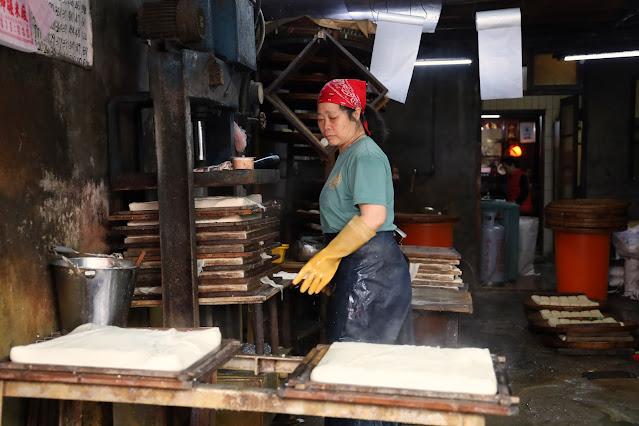
尤協豐豆干店-炭燒味的無基改豆干
You Xie Feng Dried Tofu Shop
Charcoal-grilled Dried Tofu Made from Genetically Modified Soybeans
清晨的新莊老街仍寧靜無聲,「尤協豐豆干店」早已飄出豆香。鍋中豆漿翻騰,門外老顧客等著那熟悉的炭烤香。創立於清同治年間的尤協豐,是新莊百年老店,傳承四代,店面雖小,卻在地聲名遠播。其豆干清香中帶炭烤味,成為許多新莊人記憶中的滋味。豆腐源自漢代劉安,傳入台灣後,為延長保存,人們將其滷製、烘烤為豆干。早年物資匱乏,豆干成為平價的肉食替代品,「豆干菜脯滯」的閩南諺語,更道出其在三餐中的重要角色。
Xinzhuang Old Street is still quiet in the early morning, and the aroma of beans has already wafted from the "You Xiefeng Tofu Shop". The soy milk in the pot is boiling, and old customers outside the door are waiting for the familiar charcoal-grilled aroma. Founded in the Qing Dynasty, You Xiefeng is a century-old store in Xinzhuang, passed down through four generations. Although the store is small, it is well-known locally. The tofu has a light fragrance with a hint of charcoal-grilled flavor, which has become a taste that many Xinzhuang people remember. Tofu originated from Liu An in the Han Dynasty. After it was introduced to Taiwan, people braised and baked it into tofu to prolong its shelf life. In the early years when supplies were scarce, tofu became an affordable substitute for meat.
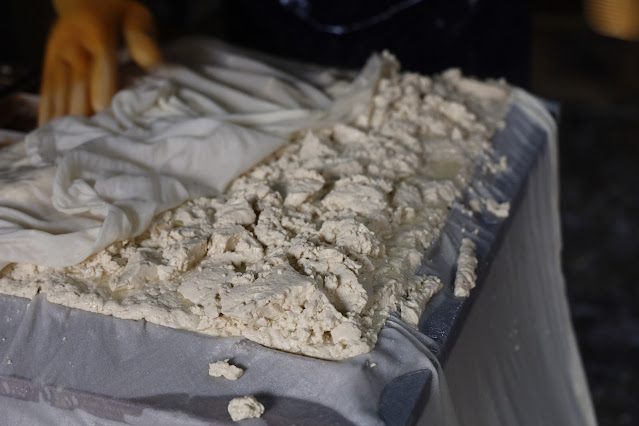
尤協豐豆干店-炭燒味的無基改豆干
You Xie Feng Dried Tofu Shop
Charcoal-grilled Dried Tofu Made from Genetically Modified Soybeans
尤協豐豆干店堅持古法製作,從黃豆泡水、磨汁、柴火大鍋煮漿開始,每一步都講究工序與耐心。煮好的豆漿經過過濾發酵後,裝入方格鐵盤以布包覆,再以壓榨成形。成型後的豆干風乾切塊,全程不靠機器加速,完全仰賴自然力。尤信富強調,連「夏五冬十」的浸豆時間都遵守,因少一道工序就會失去傳統風味。這種對細節與品質的堅持,不僅延續老店的信譽,也讓每一塊豆干保有最自然的滋味。
You Xiefeng Tofu Shop adheres to the traditional production method, starting from soaking soybeans in water, grinding the juice, and boiling the slurry in a large pot over firewood. Every step requires careful craftsmanship and patience. After the cooked soy milk is filtered and fermented, it is put into a square iron plate, covered with cloth, and then pressed into shape. The tofu is air-dried and cut into pieces after being formed. The whole process does not rely on machine acceleration but entirely on natural forces. This insistence on details and quality not only continues the reputation of the old store, but also ensures that every piece of tofu retains the most natural flavor.
新莊廟街-日日用打鐵店
Xinzhuang Temple Street - Home of Handcrafted Blacksmiths
王崇德的祖父來自福建永春,清朝時定居新莊,創立「金日用打鐵店」,因應當時農業發達、農具需求大,打鐵業隨之興盛。民國40年,父親王叔明於新莊路創設「日日用打鐵店」,傳承至今。王崇德自小在鐵火聲中長大,十歲就幫忙削刀,雖曾試圖離開家業,最終還是回到打鐵這條路。如今他已56歲,是新莊僅存仍能進行鍛造技術的師傅,三代傳承的打鐵技藝,在他手中延續著不滅的火光。
Wang Chongde's grandfather was from Yongchun, Fujian. He settled in Xinzhuang during the Qing Dynasty and founded the "Jin Riyong Blacksmith Shop". As agriculture was developed and there was a great demand for farm tools at that time, the blacksmith industry flourished. In 1951, my father Wang Shuming founded the "Ri Ri Yong Blacksmith Shop" on Xinzhuang Road, which has been passed down to this day. Wang Chongde grew up surrounded by the sound of iron fire. He started helping to sharpen knives at the age of ten. Although he tried to leave the family business, he eventually returned to blacksmithing. Now he is 56 years old and is the only master in Xinzhuang who can still practice forging techniques. The blacksmithing skills passed down for three generations continue to burn brightly in his hands.

廟街百工技藝 - 文山磨刀行
Temple Street Craftsmanship - A Master Sharpener
文山磨刀行的創辦人-徐厚仁師傅說 : 以前父親對我說 : 如果不會讀書就去學一門技藝,才能養家活口。而我國小畢業,就跟哥哥學習磨鋸片的技藝,如今新莊會這樣技術的人非常稀少。這是用我一輩子的青春與歲月,換來的成果。
Master Xu Houren, the founder of Wenshan Knife Sharpening Shop, said: My father once told me: If I can’t read, I should learn a skill to support my family. When I graduated from primary school, I learned the skill of saw blade sharpening from my brother. Nowadays, there are very few people in Xinzhuang who have such skills. This is the result of my lifelong youth and years.
廟街風華-武聖廟-後殿鳥瞰
Temple Street Style - Wusheng Temple - Bird's-eye View of the Rear Hall
位在新莊廟街的武聖廟,俗稱「關帝廟」,是新莊廟街其中一座三級古蹟。本廟奉祀關羽,是北台灣最早的關帝廟,與慈祐宮、廣福宮並稱為新莊三大廟之一。當時興直堡是台灣北部首闢大鎮,新莊的米由苦力挑經米市巷到港口讓船運至大陸,造成新莊的繁榮發展,武聖廟也在此時興建,也是當時淡北地區最大的武廟。站上後殿二樓可以一觀武聖廟建築之美。
The Wusheng Temple, commonly known as the "Guan Di Temple", located on Xinzhuang Temple Street is one of the third-level historical sites in Xinzhuang Temple Street. This temple enshrines Guan Yu and is the earliest Guandi temple in northern Taiwan. It is one of the three major temples in Xinzhuang along with Ciyou Temple and Guangfu Temple. At that time, Xingzhi Fort was the first large town in northern Taiwan. The rice from Xinzhuang was carried by coolies through Mi Shi Lane to the port for shipment to the mainland, which led to the prosperity of Xinzhuang. The Wusheng Temple was also built at this time and was the largest martial arts temple in the northern part of Tamsui at that time. Standing on the second floor of the rear hall, you can see the beautiful architecture of the Wusheng Temple.
廟街風華-武聖廟-古文物
Temple Street - Wusheng Temple - Ancient Cultural Relics
武聖廟雖經多次重修,但仍留下不少重要碑匾與古物,最重要的文物如下:1.是重修時之捐獻碑,目前置於廟後空地;2..是新莊縣丞郭志緯所撰之重修與置產二木碑文,目前仍留於廟中左、右廂廊壁上。3.牌匾方面,則有 「萬古精忠」匾,傳說是沈葆楨所書;另外還有拓於正殿左、右之朱文公筆蹟壁書 「忠孝」、「節義」。在古物方面,有一個大型古算盤,又傳說有一個五百年古銅淨香爐......等。但是我還沒有找到再何處?
Although the Wusheng Temple has been rebuilt many times, many important steles and antiques are still left. The most important cultural relics are as follows: 1. The donation stele during the reconstruction, which is currently placed in the open space behind the temple; 2. The wooden stele inscription of Xinzhuang County, which is still kept in the temple. 3. As for the plaques, there is the "Eternal Loyalty" plaque, which is said to be written by Shen Baozhen. There is also a large ancient abacus, and it is said that there is a 500-year-old bronze incense burner...etc. But I haven't found where yet?

廟街風華-林泉成古厝
Temple Street Style-Linquancheng Ancient House
新莊老街多數老屋已翻修,僅林泉成商號完整保留日治時期風貌,成為旅人必訪景點。建於清道光年間,擁有百年歷史,為三進三院格局,側牆為土埆造,正背面與圓柱皆為磚造。外觀使用福州杉木,未曾大幅翻修。學者認為現貌為1920年市區改正時改建,風格近似大稻埕街屋。建築細節如橫帶裝飾、商號匾額「林泉成」、橫匾「十德堂」、二樓灰泥山牆與拱心石裝飾,展現當時建築美學。內部空間亦保留原貌,具高度歷史與研究價值。
Most of the old houses in Xinzhuang Old Street have been rebuilt, but the Linquancheng Commercial House has completely retained its appearance during the Japanese colonial period, becoming a must-visit attraction for travelers. It was built during the Daoguang period of the Qing Dynasty and has a history of one hundred years. Scholars believe that the current appearance is the urban planning style of the period when Japan ruled Taiwan in 1920, and the style is similar to the street houses in Dadaocheng. Show the architectural aesthetics of the time. The interior space has also been preserved in its original state, and has high historical and research value.
新莊三古街-戲曲街
Xinzhuang Sangu Street-Opera Street
戲館巷位於新莊路359巷,是清代新莊廟街上的重要文化地點。因新莊自乾嘉年間即為北台灣政經重鎮,商旅雲集,隨移民而來的戲曲文化也深植於此。據耆老說法,戲館巷曾有多家戲館進駐,聚集了眾多教戲師傅與戲班,成為學戲者的聚點。當時流行的戲劇有大戲(九甲戲)與白字戲,皆源自梨園戲。新莊戲劇類型多元,不僅因移民背景,也與廟宇活動密切相關。清道光二十年(1840)前成立的「聚賢堂」被視為北部南管發源地之一。後續亦出現多個子弟班與陣頭,如俊賢堂、新樂園、西園軒等。其中「北管新樂園」至今仍活躍於新莊老街,每週三夜教學並接受廟宇邀演,展現傳統戲曲文化的延續與活力。
Xiguan Lane is located at Lane 359, Xinzhuang Road. It was an important cultural location on Xinzhuang Temple Street in the Qing Dynasty. Since the Qianlong and Jiaqing periods, Xinzhuang has been an important political and economic center in northern Taiwan, attracting many merchants and travelers, and the opera culture that came with the immigrants is also deeply rooted here. According to elders, there were many theaters in Xiguan Lane, which gathered many drama teachers and drama troupes, making it a gathering place for those who wanted to learn drama. Show the continuation and vitality of Taiwan's traditional opera culture.
慈祐宮-媽祖像
Ciyou Temple-Statue of Mazu
慈祐宮正殿主祀媽祖,左側配伽藍王爺,右側配福德正神;後殿主觀音佛祖,左右配達摩祖師、註生娘娘;開山殿供奉歷代祖師與住持僧侶之牌位。
The main hall of Ciyou Temple deifies Mazu, with the guardian deity on the left and the earth god on the right; the rear hall deifies Guanyin Bodhisattva, with Bodhidharma on the left and right; the Kaishan Hall enshrines tablets of ancestors and abbots.
慈祐宮-左右護法-順風耳
Ciyou Temple - Mazu's left and right guardians - Listen to the gods far away
有傳說中記載,媽祖乃是觀音菩薩的化身,因此千里眼和順風耳分別負責替媽祖「觀千里災難」和「聽音救苦」,「觀」與「音」二者相合,正符合「觀音大士」之意。
According to legend, Mazu is the incarnation of Guanyin Bodhisattva, so the god who can see far away and the god who can hear far away are responsible for "observing disaster relief thousands of miles away" and "hearing relief from suffering" for Mazu respectively. "Guan" and "yin" combine, which is in line with the meaning of "Bodhisattva who observes the sounds of the world".
新莊廟街特產-鹹光餅
Xinzhuang Temple Street Specialty-Salty Pancake
新莊出名鹹光餅,豆干世界第一名,
正宗偶戲有車拼,大鼓响出太平聲。
此打油詩中道出新莊廟街的文化特色與特產-鹹光餅。
Xinzhuang is famous for its salty biscuits and its dried tofu is the best in the world.
The authentic puppet show features car puppetry and the big drum sounds of peace.
This couplet describes the cultural characteristics and specialty of Xinzhuang Temple Street - the salty biscuit.
廣福宮 - 三山國王廟 - 客家族群的信仰中心
Guangfu Temple - Sanshan King Temple - The religious center of the Hakka people
新莊廣福宮為台北盆地中最古老的客家族群廟宇,展現客家人樸實精神,主祀三山國王(斤山、明山、獨山)。廟宇採本土觀音山石建材,龍柱下覆蓮式磉石具唐代風格,與淡水鄞山寺、鹿港龍山寺並列全台僅有。虎邊龍柱刻有劉厝圳捐獻者劉家的事蹟,後殿牆壁以來自中國的烏磚砌成,天井設有敬字亭與鵝卵石地面,文化氛圍濃厚,為新莊唯一的二級古蹟,歷史與藝術價值兼具。
Xinzhuang Guangfu Temple is the oldest Hakka temple in the Taipei Basin. It showcases the simple spirit of the Hakka people and is dedicated to the Three Mountain Kings (Jinshan, Mingshan, and Dushan). The temple is built with local Guanyinshan stone. The dragon pillars are covered with lotus-shaped stones in the Tang Dynasty style. It is the only one in Taiwan, along with Tamsui Yinshan Temple and Lukang Longshan Temple. The tiger-side dragon pillars are engraved with the deeds of the Liu family, the donors of the Liucuo Canal. The walls of the rear hall are built with black bricks from China. There is a Jingzi Pavilion and a cobblestone floor in the patio. The cultural atmosphere is strong. It is the only Class II historic site in Xinzhuang, with both historical and artistic value.
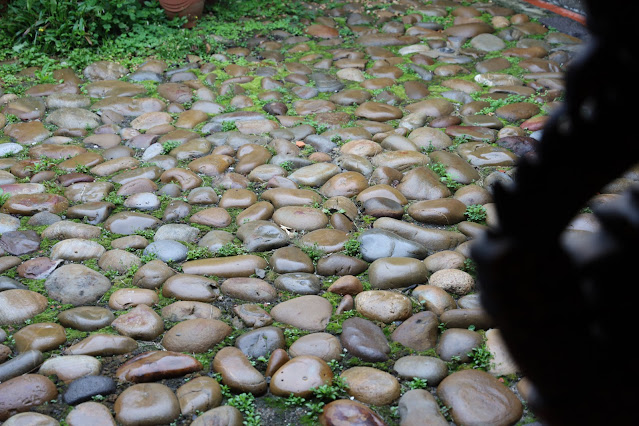
廣福宮-後殿的庭園-卵石砌
Guangfu Palace - Garden of the rear hall - Pebble paving
廣福宮的後殿的天井上的廣場,由就地取材的鵝卵石鋪設。我們從此處切入來反推建廟時的狀況,從廣東移民而來的客家人,應該屬於比較樸質的生活模式。因為廟街距大漢溪非常近,河道應該有很多的鵝卵石,所以就地取材來鋪設天井廣場地面。雖然踩起來不太平,卻是保留了這塊廟宇土地附近的地質考證。
The square on the patio of the rear hall of Guangfu Palace is paved with locally sourced pebbles. From this point we can infer the conditions when the temple was built. The Hakka people who immigrated from Guangdong should have a more simple lifestyle. Because Temple Street is very close to Dahan River, there should be a lot of pebbles in the river, so local materials were used to pave the floor of the patio square. Although the ground is not smooth, it preserves the geological evidence near the temple land.
翁裕美麥芽糖工廠
Weng Yumei Maltose Factory
新莊老街的翁裕美商行,創立於1900年,至今已超過120年,是當地僅存的製糖行。傳承四代,堅持手工製作麥芽糖,每日清晨四點開工。產品分為以糯米製成、口感濃郁的米貽,以及成本較低、甜度高的水貽,分別供家庭與商戶使用。隨著傳統糕餅式微,需求減少,但商行仍專注製糖,並透過電商平台拓展市場,讓更多人品味這份百年傳統的甜味記憶。
Weng Yumei Trading Company on Xinzhuang Old Street was founded in 1900 and has been in business for more than 120 years. It is the only remaining sugar manufacturing company in the area. Inherited for four generations, the maltose is made by hand, starting at four in the morning every day. The products are divided into rice mussels, which are made from glutinous rice and have a strong taste, and water mussels, which are lower in cost and sweeter, for use by households and businesses respectively. As traditional pastries decline, demand decreases, but the business still focuses on sugar production and expands the market through e-commerce platforms, allowing more people to taste the sweet memory of this century-old tradition.
翁裕美麥芽糖工廠Weng Yumei Maltose Factory
工廠遵循古法製成、最紮實可口的麥芽糖。現在市面上的麥芽糖,絕大部分都沒有麥芽,因為要遵循古法做麥芽糖得先讓麥子長出新芽,等約一週後才能使用,但是台灣天氣太熱,麥子實在不易發芽。翁裕美為了提升品質,自民國6、70年代將生產器械化,在廠房裝上冷氣,讓種子發芽的六七天裡、品質相當,也開始使用鍋爐代替人工攪拌,讓糖化過程更穩定。
The factory follows the ancient method to make the most solid and delicious maltose. Most of the maltose available on the market now does not contain malt, because in order to follow the ancient method of making maltose, the wheat must first grow new sprouts and wait about a week before it can be used. However, the weather in Taiwan is too hot and it is not easy for wheat to germinate. In order to improve the quality, Yung Yu-Mei mechanized the production since the 1960s and 1970s. She installed air conditioning in the factory to ensure that the quality of the seeds remained consistent during the six or seven days of germination. She also began to use boilers instead of manual stirring to make the saccharification process more stable.

新莊廟街中的正港麥芽糖
Zhenggang Maltose in Xinzhuang Temple Street
新莊廟街中藏著一間老工廠,除了出貨給許多真正需要麥芽糖的業者,他們也再工廠門口銷售他們家自己的麥芽糖產品。因為是工廠直售,非常便宜。阿弘帶著夥伴們開啟了麥芽糖大採購。
There is an old factory hidden in Xinzhuang Temple Street. In addition to shipping to many businesses that really need maltose, they also sell their own maltose products at the factory gate. Because it is sold directly from the factory, it is very cheap. Ah Hong and his partners started to purchase maltose.
新莊廟街-網美拍照的聖地
Xinzhuang Temple Street - a holy place for Internet beauties to take photos
新莊廟街假日時沒有大量的觀光客湧入,
如果你熱愛有歷史感的人物攝影,
新莊廟街真是一處好地方。
There are not a lot of tourists flocking to Xinzhuang Temple Street during holidays.
If you love historical figure photography,
Xinzhuang Temple Street is really a great place.
阿瑞官粿店-每日現做的手工粿
Handmade rice products shop-handmade rice products made daily
新莊廟街的阿瑞官粿店,創立於清同治年間,傳承五代,是在地知名的百年老店。主打芋粿巧、草仔粿、油飯與紅龜粿,並提供滿月油飯及節慶限定糕點。草仔粿皮薄餡多,蘿蔔絲、蝦米與油蔥香氣十足,古早味濃郁;芋粿用料實在,芋頭塊與油蔥鹹香迷人;芋粿巧更是招牌,內有芋頭與肉塊,Q彈粿皮與濃郁油蔥香讓人一吃成主顧。阿瑞官的好味道,是新莊老街不能錯過的經典美食。
The Arimi Products Store on Xinzhuang Temple Street was founded during the Qing Dynasty and has been passed down for five generations. It is a well-known century-old store in the local area. Make a variety of traditional rice-based delicacies and provide the public with limited-edition holiday cakes. It is a classic delicacy that you cannot miss in Xinzhuang Old Street.
阿瑞官粿店-每日現做的手工粿
手工現做的紅龜粿
Handmade rice products shop-handmade rice products made daily
做粿的原料-鼠麴草
Ingredients for making rice cakes - kohlrabi
百年製粿店的草仔粿中,使用鼠麴草來當天然的染色劑。外皮Q彈之外,還有淡淡的鼠麴草香氣,夏天享用時,一股清爽感從口中散發出來。
The grass cakes made by the century-old cake shop use sedge as a natural dye. The outer skin is chewy and has a light aroma of sedge. When you enjoy it in the summer, a refreshing feeling emanates from your mouth.
保元宮-位於新莊廟街街頭
Baoyuan Palace-Located at the beginning of Xinzhuang Temple Street
保元宮每年農曆九月七至九日舉行太子爺聖誕慶典,七日繞境、八日法會與拜天公,九日重頭戲為「過炭火」儀式(俗稱「弄過火」)。此儀式源自清代大嵙崁的中壇元帥祭典,由在地信眾組成法師團赤腳抬神轎越過高溫炭火山,象徵信仰與淨化。參與者需具備強大凝聚力與虔誠信念,並於活動前一個月接受集訓與遵守傳統禁忌。儀式使用檀香粉取代鹽米,展現地方獨特文化風格。實際活動時間依主辦公告為準。
Baoyuan Temple holds the Prince's Birthday Celebration from the 7th to the 9th day of the 9th lunar month every year, with the highlight being the "Crossing the Charcoal Fire" ceremony. This ritual originated from the Qing Dynasty. A group of local believers formed a group of monks and carried the sedan chair barefoot across the high-temperature charcoal volcano, symbolizing faith and purification. Participants must have strong cohesion and devout faith, and receive intensive training and observe traditional taboos one month before the event. Show the unique local cultural style.
保元宮 - 代觀有赫 匾額
"代觀有赫" 四字之意:
代觀 = 代天巡狩
有赫 = 神靈顯赫
但是此古匾目前因為廟方將之收藏於庫房之中,
一般香客是無法看到其廬山真面目,
但是風土行腳團隊設計出特殊的新莊廟街小旅行。
各位熱愛文史走讀的夥伴們,
您可以報名下列的精緻走讀活動,
就可以一窺此匾的廬山真面目喔。
新月橋 - 行人 與 單車專用道
Crescent Bridge - Pedestrian and Cyclist Lane
新月橋是新北市政府打造的河濱人行單車連結系統工程之一,將板橋與新莊之間的行人用橋梁串聯起來。如果從新莊廟街騎單車過去板橋新埔站,只要15分鐘即可抵達。這個建設讓新北市民與遊客更加便利。
The Xinyue Bridge is one of the riverside pedestrian and bicycle connection system projects built by the New Taipei City Government. It connects pedestrians between Banqiao and Xinzhuang with a bridge. If you ride a bicycle from Xinzhuang Temple Street to Banqiao Xinpu Station, it only takes 15 minutes to arrive. This construction makes it more convenient for New Taipei citizens and tourists.
Please click on the link to register for the tour
(活動詳情 - 請點擊上方行程連結)



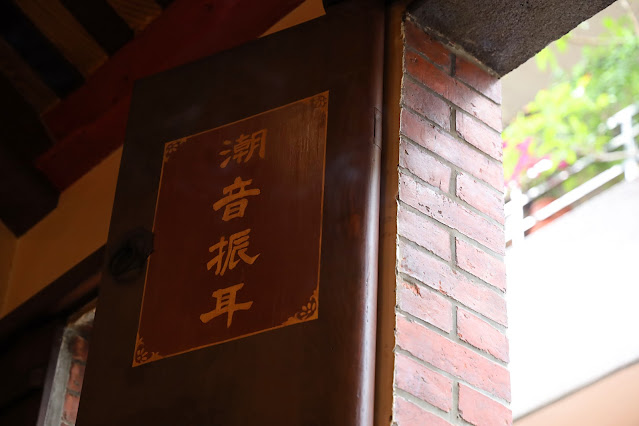
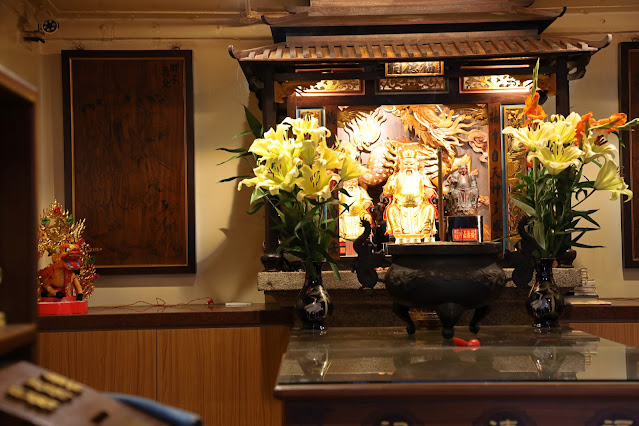

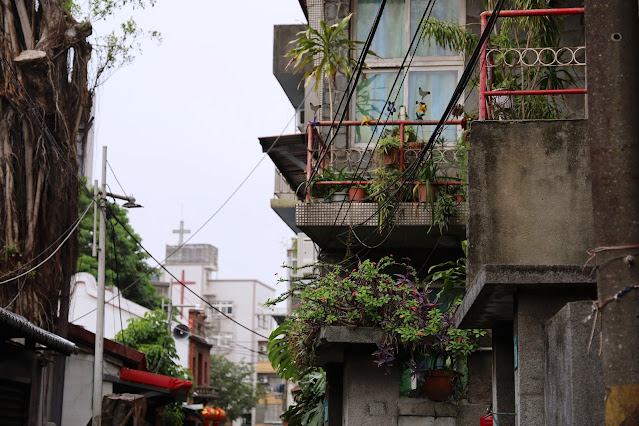







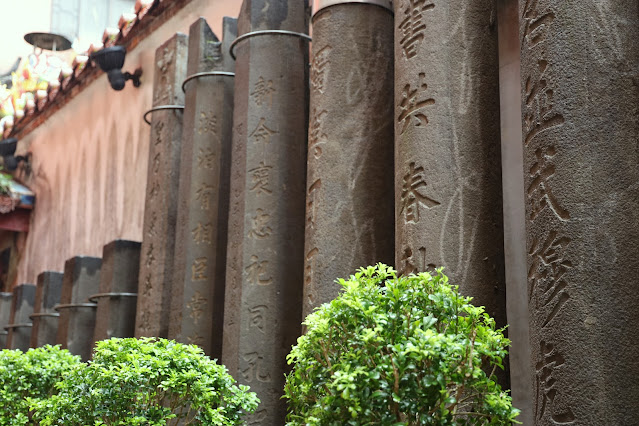



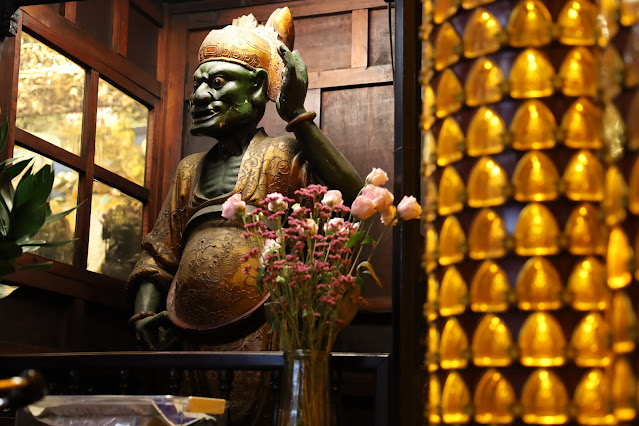
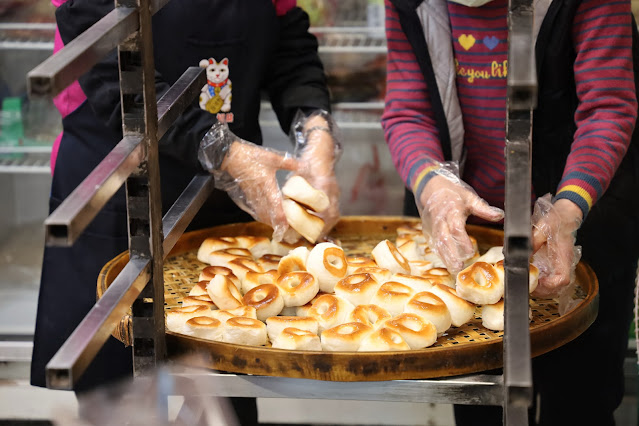


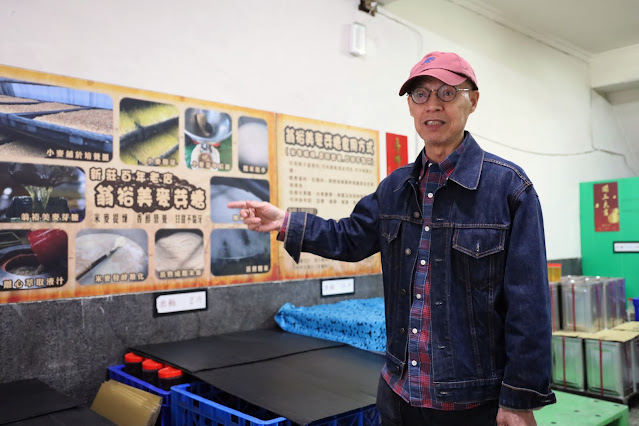
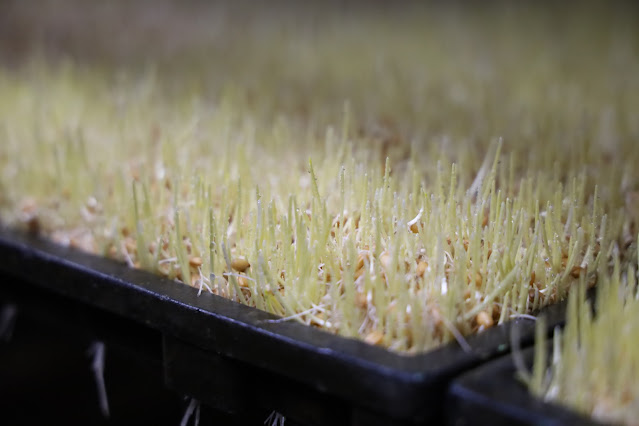

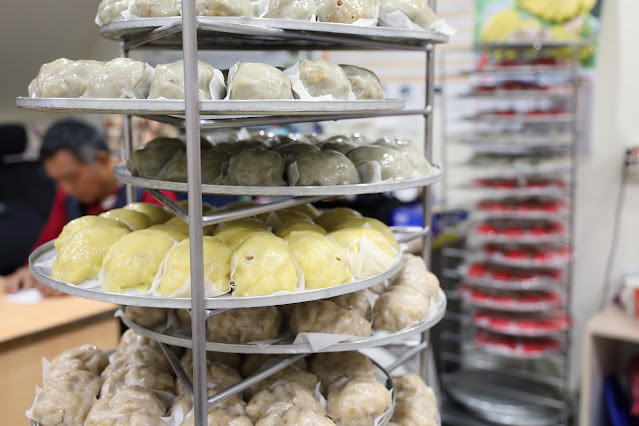
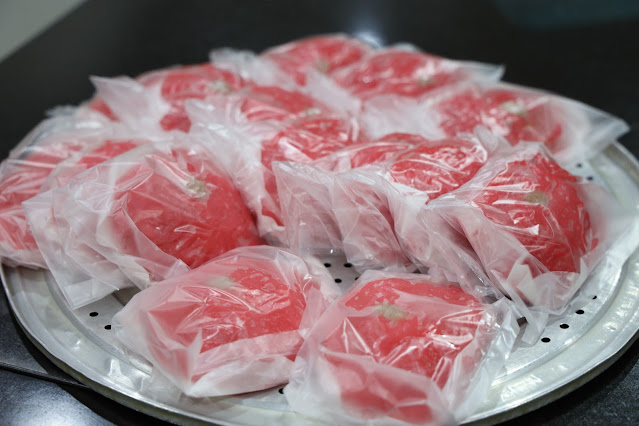

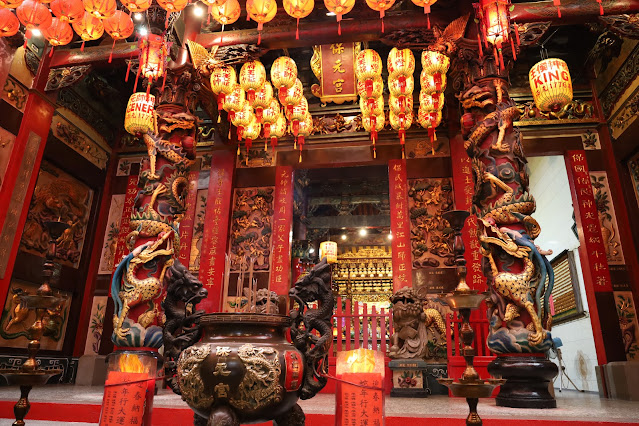
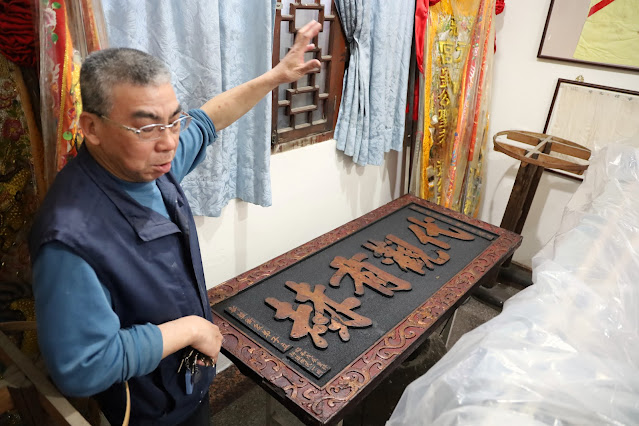




留言
張貼留言